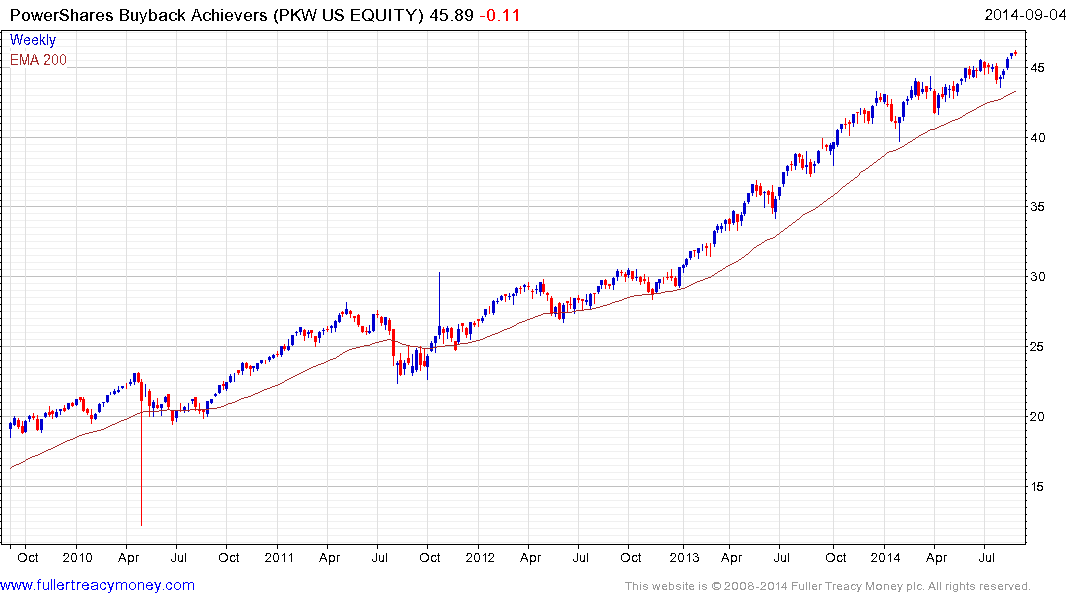Buybacks May Have Jumped a $535 Billion Shark in Barclays View
This article by Michael P. Regan for Bloomberg may be of interest to subscribers. Here is a section:
In the future, the outperformance of buybacks will be “less robust,” Jonathan Glionna, Barclays Plc’s head U.S. equity strategist, wrote in a deep-dive report on the subject yesterday. Buybacks have worked best in periods of rapid stock gains like last year’s 30 percent jump in the S&P 500 and more advances of that magnitude are not in the cards, he wrote.
Furthermore, companies with large repurchases and fast net- income growth perform much better than those with large repurchases and slow income growth: “buybacks do not solve for slow growth,” Glionna wrote.
About $535 billion has been spent on buybacks in the past four quarters, contributing about 2 percentage points of earnings growth to the S&P 500, according to Glionna. The report states that repurchases eat up more than 30 percent of cash flow, nearly twice the proportion in 2002, while capex has fallen to about 40 percent from more than 50 percent in the early 2000s, the report said.
As a result of not focusing more on investments in their business, Glionna contends that revenue growth has been weak and is the “missing ingredient” for maintaining the strength of the rally in stocks that has almost tripled the S&P 500 in the past five-and-a-half years. Sales rose 3.4 percent last year for S&P 500 companies, according to data compiled by Bloomberg.
While the flotation of Alibaba in an anticipated $20 billion IPO represents a large source of supply hitting the market, the role of buybacks in withdrawing $535 billion in the last year is a more important consideration when one assesses the outlook for the wider markets.

The Powershares Buyback Achievers ETF is comprised of companies that have bought back at least 5% of their free float in the last 12 months on a rolling basis. It continues to hold a progression of higher reaction lows and moved to a new high last week. A sustained move below the 200-day MA, currently near $43.25 would be required to question the consistency of the medium-term uptrend.
.gif)
Relative to the S&P 500, the ETF has rallied over the last week to break the progression of lower rally highs which has been evident for much of the year. A sustained move below the MA would be required to signal a return to underperformance.
Since buybacks represents such a large component of the demand for equities the ability of companies to continue to source cheap capital to fund them will likely have an influence on the wider market when the benign monetary environment eventually changes.
Back to top

